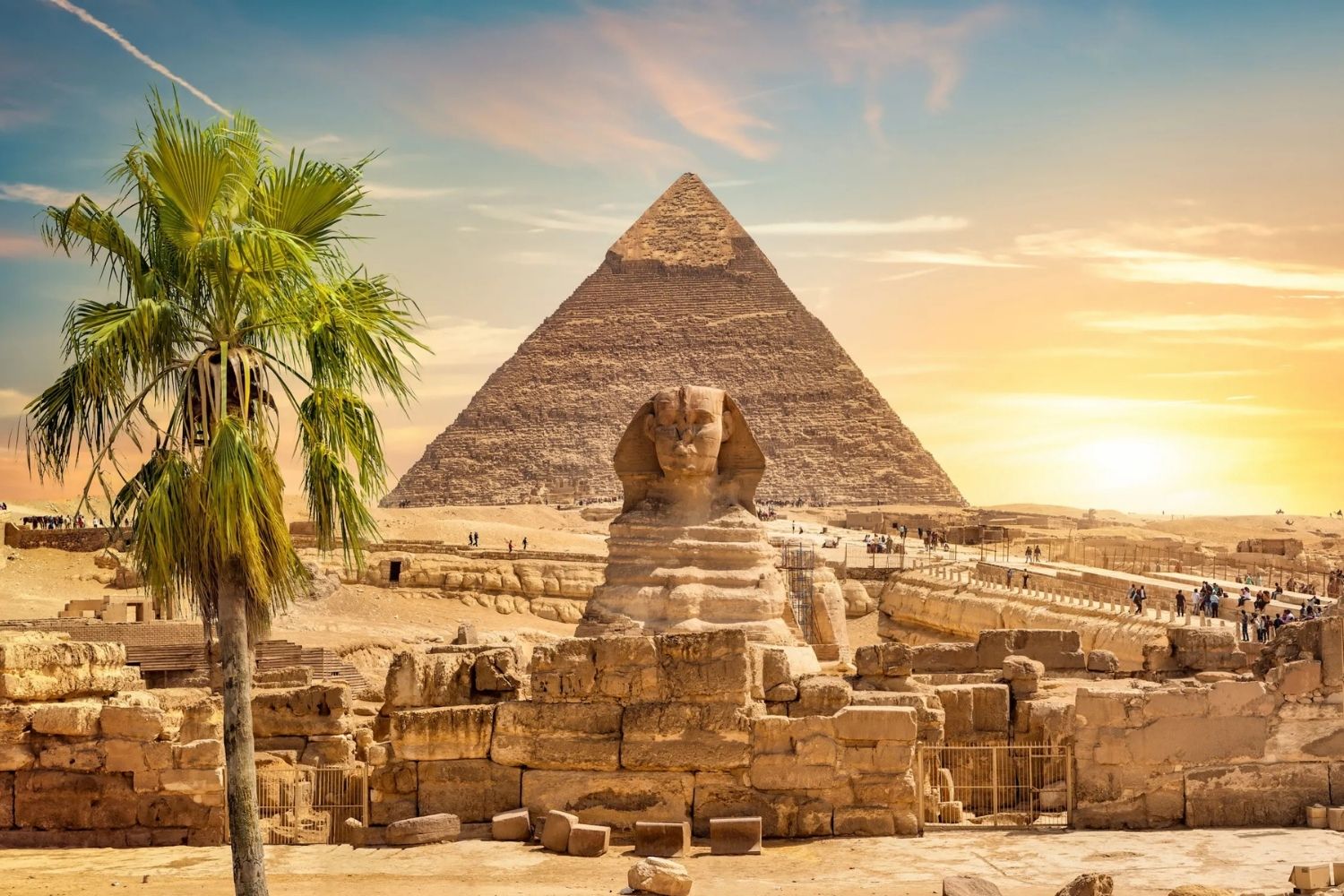
Giza is a place that sparks curiosity and wonder. Located on the outskirts of Cairo, Egypt, this ancient site is home to some of the most iconic structures in human history. But what makes Giza so special? The Great Pyramid of Giza, one of the Seven Wonders of the Ancient World, stands as a testament to the ingenuity and ambition of the ancient Egyptians. Built over 4,500 years ago, it continues to baffle scientists and historians alike. Did you know that the pyramid was originally covered in smooth, white limestone? Or that it aligns almost perfectly with the cardinal points of the compass? These are just a few of the fascinating facts about Giza. Ready to learn more? Let's dive into 26 incredible facts about this legendary site!
The Great Pyramid of Giza
The Great Pyramid of Giza is one of the most iconic structures in the world. Built thousands of years ago, it continues to fascinate people with its grandeur and mystery.
- The Great Pyramid of Giza is the oldest of the Seven Wonders of the Ancient World.
- It was constructed around 2580–2560 BC during the Fourth Dynasty of the Old Kingdom of Egypt.
- The pyramid was originally built as a tomb for the Egyptian Pharaoh Khufu.
- Standing at 146.6 meters (481 feet), it was the tallest man-made structure in the world for over 3,800 years.
- The pyramid is made up of an estimated 2.3 million blocks of limestone and granite.
- Each block weighs between 2.5 to 15 tons, making the construction a remarkable feat of engineering.
- The base of the pyramid covers an area of 13 acres, equivalent to about 7 city blocks.
- The interior of the pyramid includes three main chambers: the King's Chamber, the Queen's Chamber, and the Grand Gallery.
- The Great Pyramid is aligned with the cardinal points of the compass, showcasing the Egyptians' advanced understanding of astronomy.
The Sphinx of Giza
The Sphinx of Giza, a colossal limestone statue with the body of a lion and the head of a human, stands guard near the pyramids. It is shrouded in mystery and intrigue.
- The Sphinx is believed to have been built during the reign of Pharaoh Khafre around 2500 BC.
- It measures 73 meters (240 feet) long and 20 meters (66 feet) high, making it one of the largest monolithic statues in the world.
- The face of the Sphinx is thought to represent Pharaoh Khafre himself.
- The Sphinx was carved from a single piece of limestone, a testament to the skill of ancient Egyptian sculptors.
- Over the centuries, the Sphinx has suffered significant erosion, leading to various restoration efforts.
- The nose of the Sphinx is famously missing, with theories suggesting it was deliberately removed or eroded over time.
- The Sphinx faces directly east, aligning with the rising sun, which may have had religious significance.
Mysteries and Theories
The Giza Plateau is not just about grand structures; it is also a hotspot for mysteries and theories that continue to captivate researchers and enthusiasts alike.
- Some theories suggest that the pyramids were built by aliens due to the advanced engineering techniques used.
- The exact method of construction remains a topic of debate, with theories ranging from ramps to water flotation.
- The alignment of the pyramids with the stars of Orion's Belt has led to speculation about their astronomical significance.
- Hidden chambers and tunnels within the Great Pyramid are still being discovered, adding to its enigmatic allure.
- The purpose of the so-called "air shafts" in the Great Pyramid is still unknown, with some suggesting they were for ventilation or spiritual purposes.
Modern Discoveries and Research
Modern technology has allowed researchers to uncover new information about the Giza Plateau, shedding light on its ancient secrets.
- In 2017, scientists discovered a large void within the Great Pyramid using muon radiography, a technique that detects changes in density.
- Ground-penetrating radar has revealed anomalies beneath the Sphinx, suggesting the presence of hidden chambers or tunnels.
- Recent studies have shown that the pyramids were originally covered in highly polished Tura limestone, which would have made them shine brightly in the sun.
- The Giza Plateau has been a UNESCO World Heritage Site since 1979, protecting it for future generations.
- Ongoing excavations and research continue to provide new insights into the lives of the ancient Egyptians who built these incredible structures.
The Timeless Allure of Giza
Giza's pyramids and Sphinx have fascinated people for centuries. These ancient structures, built with incredible precision, continue to spark curiosity and wonder. From their mysterious construction methods to their alignment with celestial bodies, Giza's monuments hold countless secrets.
The Great Pyramid, one of the Seven Wonders of the Ancient World, stands as a testament to human ingenuity. The Sphinx, with its enigmatic expression, adds to the site's mystique. Giza's rich history and cultural significance make it a must-visit destination for history buffs and travelers alike.
Whether you're intrigued by the engineering marvels or the myths surrounding them, Giza offers a glimpse into a civilization that has left an indelible mark on human history. So, next time you think about ancient wonders, remember the timeless allure of Giza.
Was this page helpful?
Our commitment to delivering trustworthy and engaging content is at the heart of what we do. Each fact on our site is contributed by real users like you, bringing a wealth of diverse insights and information. To ensure the highest standards of accuracy and reliability, our dedicated editors meticulously review each submission. This process guarantees that the facts we share are not only fascinating but also credible. Trust in our commitment to quality and authenticity as you explore and learn with us.
